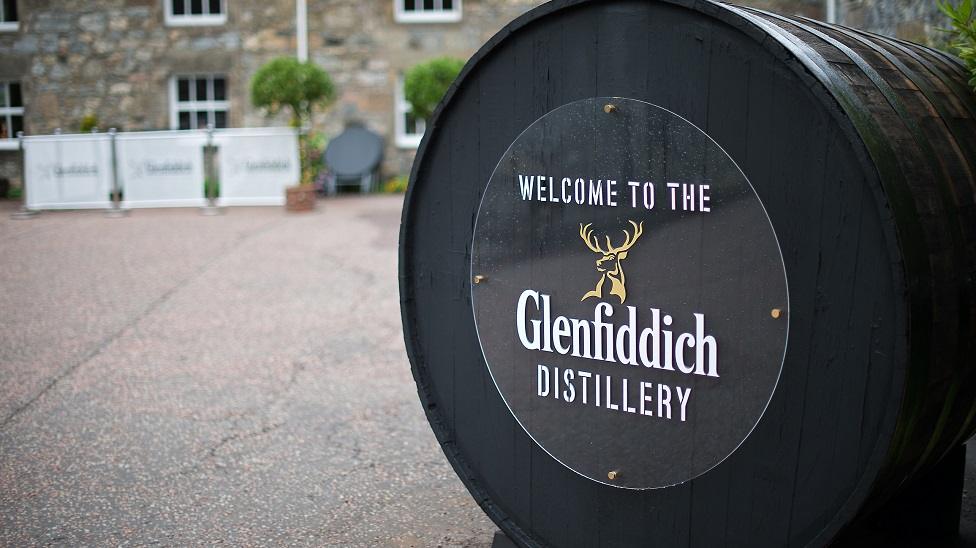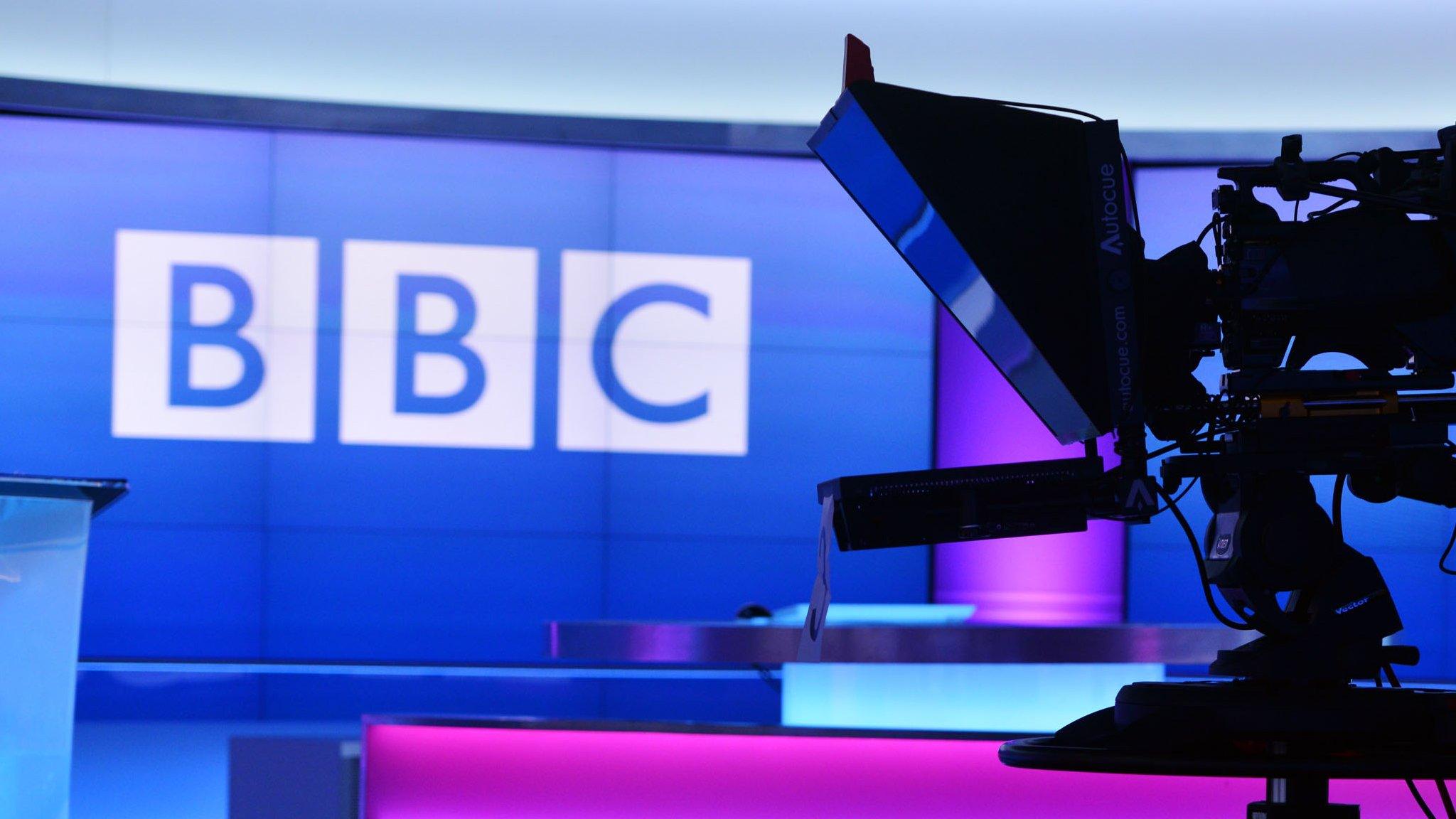The challenges facing the alcohol industry in catering for Generation Z
- Published

A new study, by marketers at a distilling giant, seeks to capture the fast-changing trends that define the modern consumer, particularly the young
It focuses on identity, health awareness, values, and a search for unique or unusual experiences
For the drinks industry, a downturn in youthful boozing is about "drinking less, but drinking better", trading up to premium products.
We're into the season of young people dressing up to scare people. So Ofcom used youngsters to frighten the jeepers out of the BBC.
The watchdog's report, external highlighted the decline in engagement by a generation too busy with Instagram and Netflix for the twists and turns of Brexit, or Eastenders.
Hallowe'en, for a younger generation, has moved beyond tricking, treating and pumpkins to become something of a party season.
So you'd think at least the one sector of the economy that can feel secure about millennials and Generation Z is the one that supplies them with vodka, gin, wine and beer, variations thereon and mixers therein.
Not so. I spent a fascinating evening this week in the company of top types from Scotland's licensed on-trade, hosted by distillers William Grant & Sons.
I found them profoundly challenged by the latest generation to get their ID cards and head for the pub.
VUCA world
Grant, the family firm that makes Glenfiddich single malt and Hendricks gin, invests each year in a marketing report intended to define what is trending, at the high (and sometimes gufftastic) level that helps them understand consumers' relationships with brands.
What they have found is an "active-ist consumer, who is characterised by a desire for curated social experiences, greater control of personal data and purpose-driven brand engagement".

William Grant & Sons is the firm behind Glenfiddich single malt
Put more bluntly, that target and typically young consumer is drinking less, partly because she or he is more health conscious. They are searching for unique or unusual experiences, and want association with brands that carry environmental kudos, and a social message too.
They embrace technology, but fear its reach into their privacy. They want choice, yet they also want that choice curated and simplified.
In the VUCA world - volatile, uncertain, complex and ambiguous - they seek to make sense of it alongside commercial brands that "go the extra mile for them, and with them - they are more concerned than ever before about the world around them and their role in it".
Gin genie
For the beer, wine and spirits business, which rose in its UK value last year to £43bn, it needs to be heavily invested in adapting to such trends, and recruiting new drinkers, if it is to maintain its growth.
While on-trade complains loudly about the advantages of off-trade, both are growing. Last year, on-trade was up to nearly £26bn, and off-trade slightly faster to £17bn.
One aspect of the battle that they welcome is minimum unit pricing, which cuts the ability of retailers to discount, though has less impact at the premium end of the market. "Pre-loading" on cheaper off-sales booze remains the means by which high on-trade prices can be avoided.

When will the growth in the gin sector decline?
Within that total, the spirits sector is growing at twice the pace of the booze market, much of it thanks to the gin genie released from the bottle in the past decade. More than 400 new gin brands have launched in the UK since 2016, according to the Grant's report, Trending 2020., external
One question in the on-trade is when that will decline, and which of the new gin distillers will survive. One wholesaler complained that he's carrying 225 types of gin, and wants to cut that to 75. But for now, the signs are that demand is beginning to plateau, and rum is established as the next big thing.
Dry generation
The bigger question, though, is how much further consumer demand, social pressure and government policy is going to undermine demand for alcohol. More than four million people took on the "Dry January" challenge, external this year.
The trend towards no or low-alcohol drinks has some momentum. The market data specialists at Kantar reckon that there was a drop in the number of people drinking in pubs, clubs and restaurants from 86% in 2014 to 81% last year.
It is reckoned that as many as one in five young people aged 16 to 24 do not drink alcohol.
William Grant & Sons recently got on board the move to both gin and low-alcohol, launching Atopia, an "ultra-low-alcohol spirit". It competes with Diageo's Seedlip.
Both are audaciously trying the trick of setting a price point comparable with spirits, even though they don't carry the huge whack of tax on a standard bottle of spirits. So the £25 price of a bottle of no/low spirit is very largely made up of profit, distilled and then conjured by clever marketing mixology.
Dinner parties
In the on-trade, it makes people wonder if they're getting their mocktails right by pricing them only just south of strongly alcoholic ones. Drinkers ought to know the absence of duty makes them much cheaper to make. But an inflated price gets them respect in the clubs.
What also gets respect in a lot of pubs and clubs is "instagrammability". A bright pink cafe that recently opened near my home claims to have been voted "the most instagrammable cafe in Glasgow". (The curmudgeon in me can't think of anything more likely to keep me from going there.)
So the on-trade is having to ally taste with looks. Don't be surprised to find a rubber duck paddling in your cocktail, or some candy floss set adrift on it.
The youngest cohort of consumers are reckoned to spend a total of five days a year looking at such pictures on Instagram. Food beats drink, of course, and so marketers are seeking ways to respond. Food and drink menus with pictures are appearing beyond the tourist traps where customers struggle to understand English.
Meanwhile, those data people at Kantar reckon that between 2013 and 2018, there were 38 million more in-home dinner parties, many of them exploring the visual appeal of food as well as its taste. Adapting the culture of the pop-up event, they offer a one-off experience instead of an endlessly repeatable digital product.
Run ragged
Meanwhile, with heightened awareness of mental health, people - and not just the young, of course - realise that booze can be a particularly bad answer to the blues.
Non-booze "mood management" is therefore big business. Non-alcoholic drinks offer mood enhancers, claiming in one example to regulate stress through adaptogens and brain-boosting nootropics. A low-calorie beer includes infusion with beer pollen to help muscle recovery post-workout.
CBD, a cannabis derivative, has emerged in the US and Canada as a legal alternative to alcohol, and before long, marketers expect to see it gain legitimacy and market share in enhancing the UK's mood.
The bit that can sometimes be forgotten is that Generation Z, born since 2000 plus some younger millennials who preceded them, may have old marketers run ragged by the rapid change in perception, expectation, the search for experience and a conscious search for values, but that doesn't mean that younger people understand what's going on either.
Individuals look to media, and mainly new media, to tell them where they should fit in. They may have the marketing world at their feet, but that's not to say it isn't a VUCA world for them too.
- Published24 October 2019

